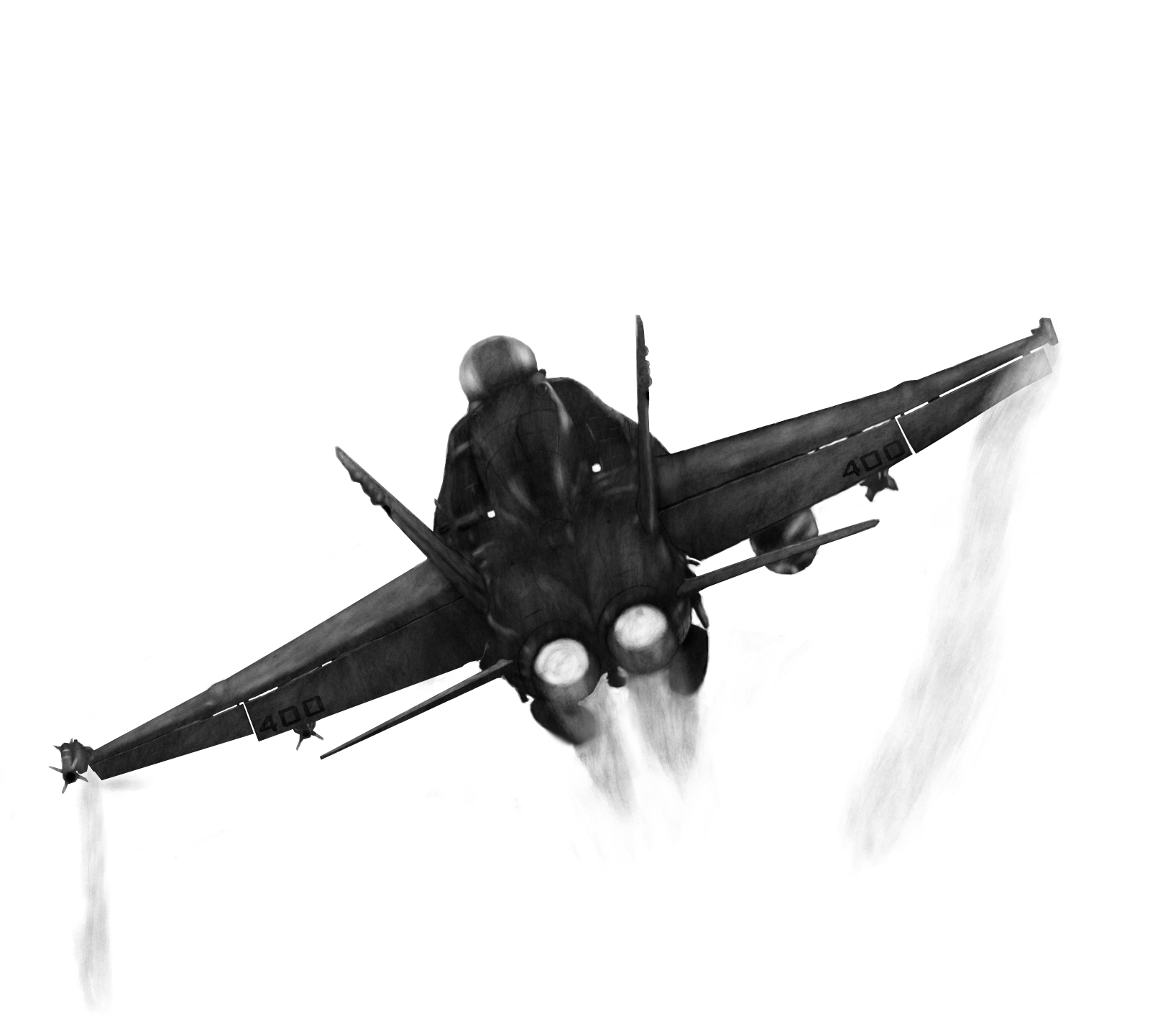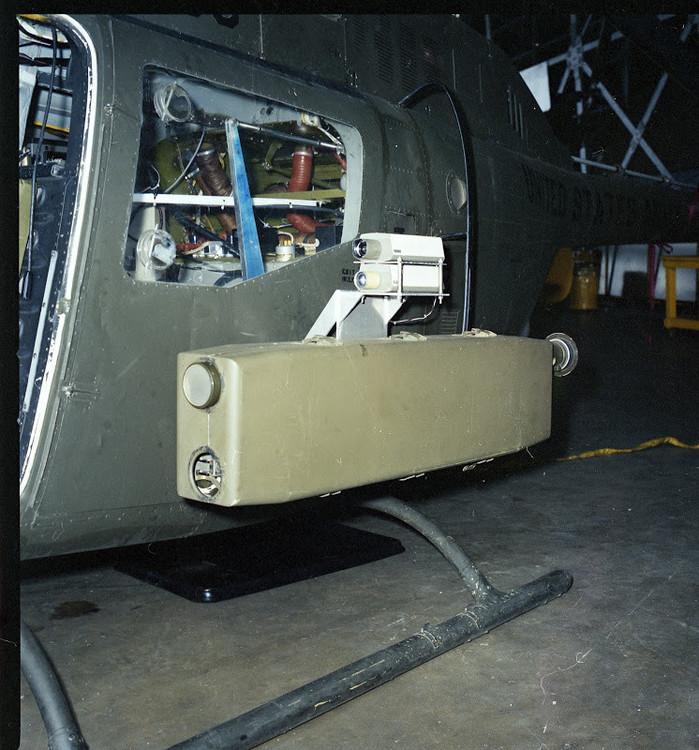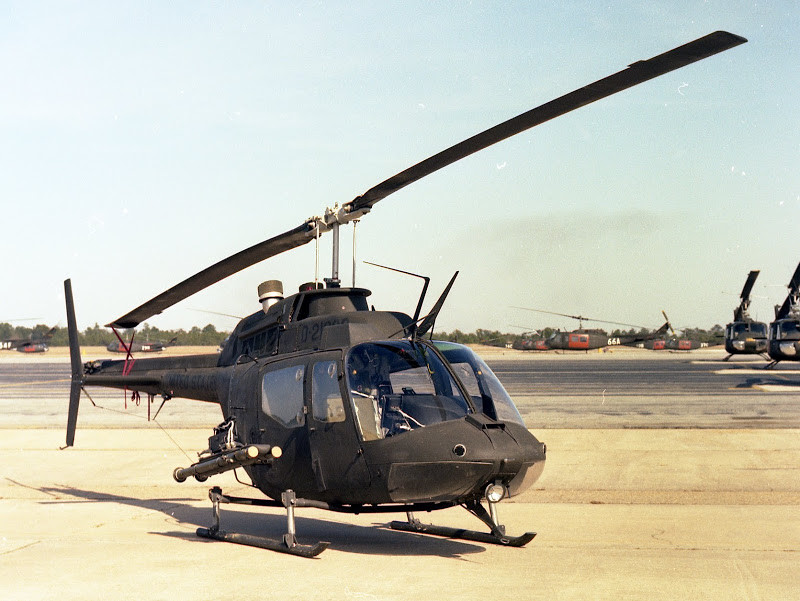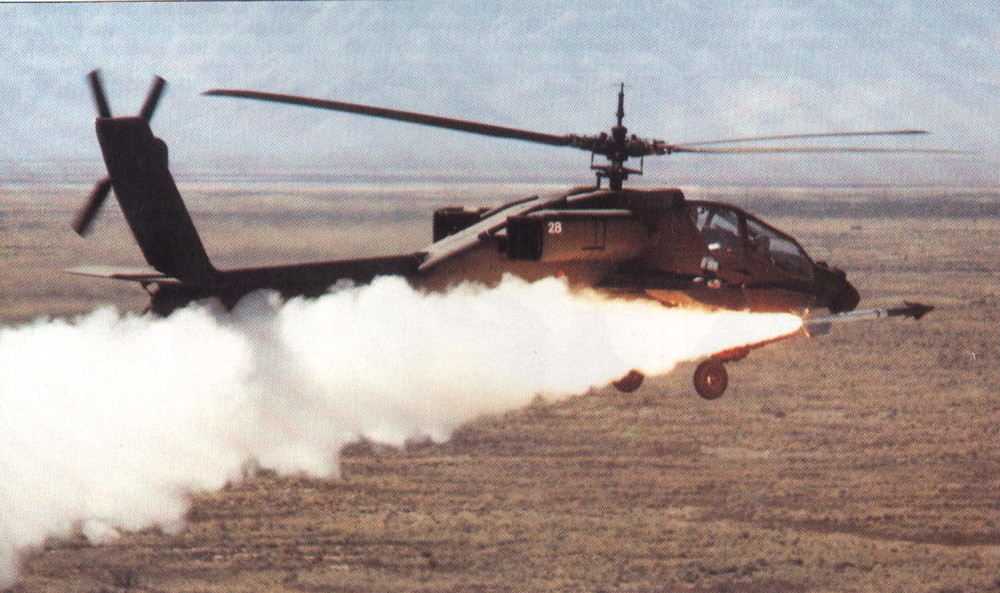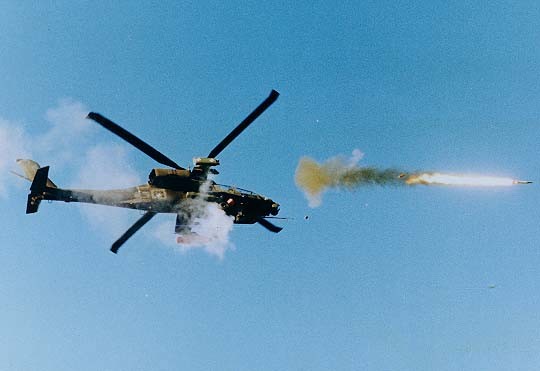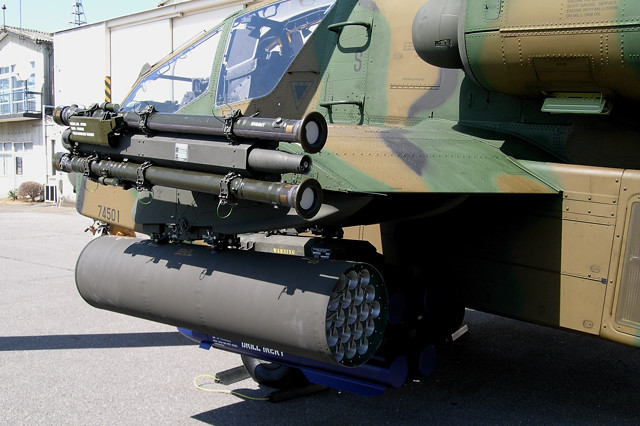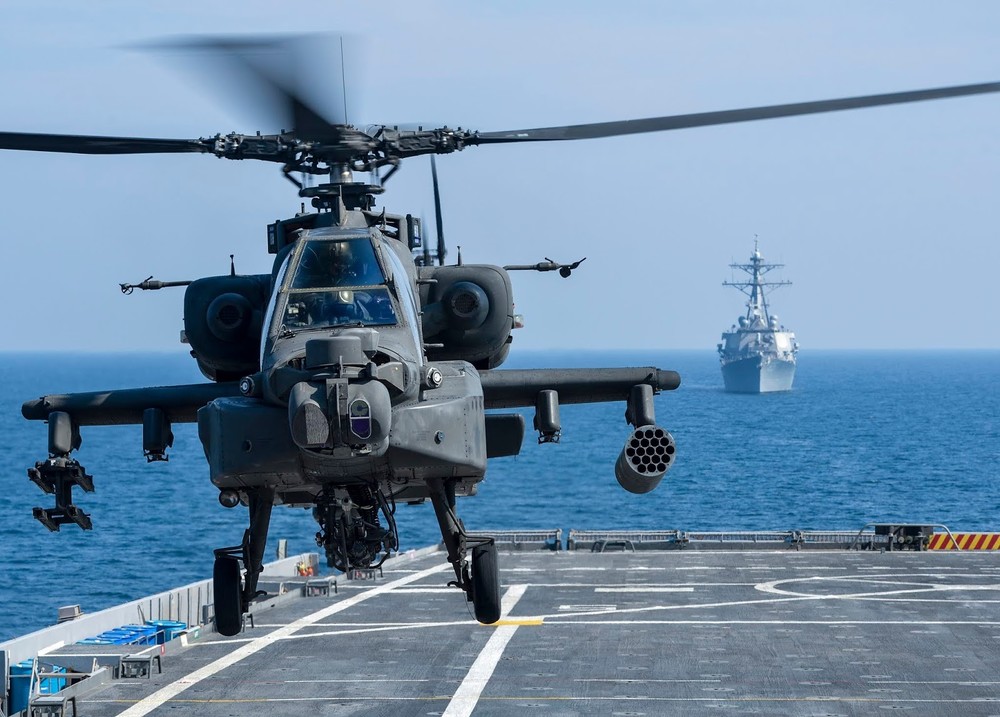-
Posts
697 -
Joined
-
Last visited
Content Type
Profiles
Forums
Events
Everything posted by NeedzWD40
-
The point is that the D has a massive apparatus that is for reconnaissance, identification, data sharing, and communication. These upgrades are not important if the mission is pure CAS/attack -- they are even detrimental to that mission due to the extra weight and power demands added. They do, however, make the AH-64D a far better team player and allow it to direct friendly assets as required. I am unsure of what you mean by "data communication" but I presume you intend aircraft intended for data sharing and recon; the OH-58D would be the first purpose built example. Previous iterations were modifications of the UH-1, OH-58A/C, and OH-6 series aircraft, none having the same level of capability. You believe what you want to believe, slick. I will allow others to judge the information I've shared on the subject to be judged on their merits rather than my own personal or professional experience. The US military expects each part of the team to contribute to mission success. Attack helicopters are but one part of the whole and expected to be either part of the tip or part of the shaft as required. A smaller military, relying on attack helicopters alone, won't have the same luxuries as a larger combined army will. So yes, I would expect the variety of European militaries to approach attack helicopters differently -- they have to.
-
They were not attacking a strong point and they were not operating alone. Here is a good overview: Yet despite the individual technological capabilities and the crews, the attack at Karbala was a massive failure. It failed because they believed exactly as you believe: that the AH-64D was so advanced, so capable, and the crews so well drilled that no support would be needed from any other elements in the battle space. They were proven quite wrong. The data capabilities of the AH-64D are one of the key reason's for its existence. Otherwise, the AH-64A was a potent attack helicopter by itself and there would be no need for the additional upgrades of the D if all it was going to do was attack. Finding targets, identifying them, and passing that data back to the ground commander is far more important than blasting a few tanks, because the firepower that a flight of AH-64s can bring to bear pales in comparison to a battery of artillery, a spread of Tomahawks, or a bombing run from B-52s. Don't believe me? Then take a look at FM 1-112: "(1) The ATKHB is an aerial maneuver unit usually employed as a battalion. It conducts attack, reconnaissance, and security operations that complement other maneuver forces. The ATKHB enables the supported commander to mass combat power rapidly at the decisive time and place to affect a battle's outcome. The commander must integrate the ATKHB into his tactical maneuver plan with other maneuver units. When employed with other combat assets, the ATKHB can strike the enemy where and when it is most vulnerable. (2) An ATKHB never fights alone. Attacks are coordinated with other maneuver, combat support, CSS, and joint forces to form a combined arms team. This team surprises and overwhelms the enemy at the point of attack. Attacks may be conducted out of physical contact with other friendly forces but synchronized with their scheme of maneuver, or they may be in direct contact with friendly forces." Attack helicopters, in US Army doctrine, are generally referred to as the commander's "silver bullets." They are not hatchets, axes, swords, or cannons; they are special use items that are costly to employ, and therefore must be used carefully and with due consideration. The AH-64D within this context is best used for attacking elements that affect the rest of the force; ie ADA. Conversely, the tools it can employ in the execution of that task can range from naval gunfire direction, to fixed wing DEAD elements, to ground forces in proximity, to its own weapons. Opening the door to an A-10 dropping a few CBU-97s by destroying ADA elements in an armored brigade is a much more efficient move than wasting 16 HELLFIREs that could be better employed on critical targets in the battlespace. The attack element only comes in when those assets are otherwise engaged or unavailable. Communication within attack helicopters, superb or not, was primarily a result of their association with the ground commander (for the US Army). Most of this was driven by scout helicopters which were attached to artillery for spotting. Most of the communication advances were the result of limitations found after ODS (again, a key driver for the AH-64D program). Jets were the first to employ data links and data sharing. Attack helicopters began as CAS elements for ground commanders, primarily due to issues with endurance and availability of fixed wing assets. The further adoption of the anti-tank mission came as a result of the tank disparity between the Warsaw Pact and NATO.
-
That was part of the reason for the D's upgrades. It's also been one of the responsibilities of the aircraft since the OH-58D was retired from service. In addition, there's also things like laser guided artillery which exponentially increases the firepower available to the helicopter. There's no sense in wasting your own limited ordnance when someone else is offering to expend theirs for you.
-

Is the FCR really able to reliably differentiate types of ground units?
NeedzWD40 replied to MRTX's topic in DCS: AH-64D
You aren't going to get much more than the rough guesses already out there for the AH-64 and the APG-78 in particular. However, if you're looking for an overall view of mmW radars in general, from which you can get an idea of the APG-78 works, here's a few resources: https://en.study-robot.jp/sensor/millimeter_wave_radar/ https://www.ti.com/lit/wp/spyy005a/spyy005a.pdf https://blog.bliley.com/millimeter-wave-radar-advantages-and-challenges How good the FCR works on a day to day basis? Answer is: Good enough that they've been kept in service for ~20 years and are still being sold. Plus, mmW radars in general are being utilized by a number of aircraft for sensor/targeting applications. If they were truly unreliable and useless, you wouldn't see widespread adoption of them. -
Not to worry; DCS has and will have enough gremlins that we won't be able to tell the difference between intentional ones and unintentional ones.
-
I think it's more of a question of when we will get the FCR. I think when we actually get the aircraft, most are going to be plenty happy with SAL HELLFIRE 90% of the time.
-
Yes. It's more limited in how it can be used, but the FCR is not a requirement.
-
I've had this happen when the Copilot/Operator jump into an already started helicopter, there's a desync with the state of the RWR sound switch. If the Operator seat is occupied before the aircraft is started up, then it's synchronized properly, but the game assumes the RWR is on and the RWR audio switch is on if you occupy the seat in a hot aircraft.
-
Bear in mind that a lot of the planned features pin it damn near at the end of the Block II before it was turned into the Block III/E version. Backdating to the early 2000s isn't quite as much a stretch, but there's still a lot of capability that wasn't realized until nearly a decade later. Personally, I'd just restrict the weapons for ODS and leave it at that; it'll be good enough for the theme of the campaign.
-
Off the top of my head: - Old INS, no GPS capability. Limited to a handful of waypoints on the old INS. - No AN/AVR-2 laser detecting set. - No CMWS. - No MFDs in cockpits. - No flares, single chaff bucket only. - Standard exhausts instead of ASPI exhausts. - Lower resolution TADS and PNVS instead of M-TADS and M-PNVS. - HELLFIRE types A-F instead of K and later. A and C were the majority and couldn't defeat reactive armor, F could but was larger and bulkier, having a shorter range. Along with this, M272 analog rails instead of the later M299 digital. - Position and anti-collision lights on wingtips instead of engine nacelles. - No IAFS/Robby tank. - Single ADS on rotor mast instead of two on engine nacelles. If the AGM-114A-F models are available, that'd probably be the primary limitation you'd want to slip in. Limiting the other parts are a bit more difficult outside of agreeing not to use the capabilities, ie turning CMWS off.
-
Weak. Real man use Mi-24.
-
Every helicopter is different, but most modern helicopters are a bit easier to fly than older ones. The UH-1 is actually pretty easy compared to smaller and lighter helicopters, but within DCS the easiest is probably the Ka-50. Thus far I've been having the most fun with the Mi-24, but it feels more like a STOL aircraft than a helicopter, while I'd consider the Ka-50 the closest representative to the future AH-64D in terms of systems and handling. Counteracting torque with the pedals is something you'll have to deal with in all helicopters, however. It may help to set a negative curve on the yaw so you get more authority for less pedal input.
-
First suggestion: check out the Ka-50, Mi-24, Mi-8, and UH-1 modules. These offer more than enough to keep you occupied until the AH-64D is released. Use these as placeholders for future AH-64 missions. Alternatively, look at older titles like DI's Apache Longbow (and Hind), Enemy Engaged, and others like Gunship 2000. Finally, there are plenty of books to be had on the AH-64, most of which are pretty well known. I'll make a suggestion for a less-known one, "Dressed to Kill" by Charlotte Madison. If you think you've got it bad, remember that the fans of the AH-1 have never gotten a dedicated entertainment simulator for that aircraft.
-
You are most correct! There were a variety of armament systems trialed on the OH-58A/C, but most remained extremely limited or tests. ATAS was common-ish on the 58C in ODS, but the 58A had more than a few power troubles and for the relatively few operating, made not much sense to arm them. 58A also had atrocious tail rotor authority. Nonetheless, several mounts for ATAS were developed in the 80s: This one is easier to find on ODS aircraft: There were a number of other weapons tests on the 58C conducted in the 80s and most didn't reach maturity, likely because of clashes with Apache. Most of these were rolled into the 58D. With the exception that the AH-64D that we are getting is well-suited, if not more so, for a symmetrical conflict as depicted in DCS. The ASE suite, sensor systems, and weapons are all tailored for fighting a heavy armored force, the same as the AH-64A was. The presence of enemy air doesn't change this purpose or capability, but it does demand closer coordination with friendly aerial assets. If you spy enemy air in your operations area, then you should be calling for CAP and/or ADA assets. Engaging such in your helicopter should only be as a last resort. Alternatively, you should be working with helicopters such as the Gazelle with Mistral or OH-58D with ATAS to deal with these potential threats.
-
OK, since this subject keeps coming up, it's probably about time to write down from start to finish the history of the AH-64 with Stinger, Starstreak, Sidewinder, Sidearm, laser cannons, plasma rifles, and other odd dreams that keep showing up for the Apache (because reasons). Gather around children, and I will tell you a tale of HIGH ADVENTURE! In the 1970s, the Attack Helicopter was turning into a real thing for militaries worldwide. Instead of having typical troop transports perform dual role, purpose-built rotary wing gunships were proving their utility and many militaries saw them as a highly useful asset to have on hand. In the case of NATO, attack helicopters were seen as the key solution toward the Warsaw Pact tank problem: fielding enough quality tanks to beat back a potential armored assault by Warsaw Pact forces was seen as incredibly expensive and time consuming. The counter was seen with helicopter forces fielding ATGMs such as TOW and HOT, which were presumably capable of destroying multiple tanks in one go at the fraction of the cost of a typical main battle tank. In all this, the Soviet Union had their Hind gunship, which was relatively unknown in the west until 1979. The capabilities of such a helicopter were only speculated, and it was theorized that the Hind might present a problem with a turreted gun toward fighter aircraft. Given that helicopters were relatively cheap, it made little sense to spend a lot of resources trying to shoot one down, but the Hind was something new and unknown, so some evaluations followed over how to deal with the problem. Enter J-CATCH. Come to find out, when you play within a maneuverable aircraft's envelope (helicopters) without leveraging your advantages (range, missiles), fast jets tend to not do so well. Attack helicopters were a pesky little problem for NATO, especially if the Warsaw Pact fielded great numbers of more advanced ones in the future (which would probably justify burning up expensive missiles on them, but remember this was the 70s -- disco was a thing). This led to expanded thinking regarding how helicopters might need to defend themselves from fast movers as well as attacking other helicopters. For the USMC, the AH-1J/T/W series became equipped with the AIM-9 series which also opened up the AGM-122; it made sense because it was a weapon in inventory and easy enough to adapt. Doctrinal differences between the USMC and the US Army meant that the Army didn't like the tradeoff with Sidewinder: it was big, bulky, left a huge signature, and didn't offer enough over a lighter missile like Stinger. While the Marines didn't see much issue with trading some firepower for defensive weapons, the Army felt it was a huge deal because killing tanks was the primary mission. The AH-1S/E/Fs that the Army operated were interim aircraft, so they didn't get much love in the 80s; the AH-64 was the big boy on the block and the Army was going to get it, especially after the AH-56 debacle. This led to a lot of speculations, experiments, and tests over what it could carry. Within the realm of A/A missiles, there were a handful of options that eventually got narrowed down to the Sidewinder, Stinger, and Starstreak. All three were tested and evaluated and at some point, the ATAS was on the table. What changed? The Cold War ended. Desert Storm spun up and attack helicopters rarely, if ever, encountered other attack helicopters. Funding was cut and with the jets proving they could take down just about anything that flew, it made little sense to keep investing in a capability that was of limited utility in the face of an air arm equipped just for taking out other aircraft. McAir/Boeing kept touting it as an option for foreign buyers, but the US Army never bought into it outside of tests done in the 80s and 90s. The UK MoD preferred Starstreak, but never chose to equip it either. It wasn't until the JSDF acquired their AH-64Ds that ATAS was officially part of the arsenal. The AH-64E sold to foreign buyers was also equipped with it, though not all opted for it. Some documentation for the AH-64Ev6 suggests that ATAS capability might be added to US Army Apaches, but presumably only for the #1-4 stations and not for the wingtips. Thus, in the end, the only platforms in US Army service that utilized ATAS were the OH-58D (highly disliked by crews) and A/MH-60s used by the 160th. If that changes, it will be for the latest AH-64E models, not the AH-64D Block II circa 2005-2010. Sidewinder launch. Note that this is an older model, given the fin shape. In addition, it is launched from the #4 station, not the wingtip which still retains the collision light. Starstreak launch. Note the different launcher shape compared to ATAS. ATAS as equipped on an AH-64DJP. ATAS equipped on AH-64As for the film "Fire Birds." This was primarily promotional for the AH-64C by McAir at the time, a variant that would be discarded for an all-AH-64D fleet. Note that these also lack the AVR-2 laser detector set, which wasn't introduced until after ODS. The fairing on the wingtips of this AH-64 are for the CMWS, the rearward missile launch detection sensors. Detection of missile launches is presumably more important than protection from fixed wing threats or other helicopters, given that both are more likely to be taken down by fixed wing assets rather than rotary wing. As a final note, there is a report floating around regarding airworthiness of the ATAS on the Apache, dated 1989. It is not hard to find and it is distribution statement A, but I will avoid direct linking due to the potential of 1.16. This can give some insight on how ATAS was tested on the AH-64A, including the shortcomings of the system at the time.
- 172 replies
-
- 12
-

-

-
No, it was evaluated, but never purchased or tested.
-
Might have to! Didn't mean to delve that much into the Ka-50. Not really so much DCSism as much as saying that if we're going to DCSism, why not reflect on what data is out there for what we do have? The posts cited were pretty convincing to me. Unless the argument is that we're already so far down the rabbit hole that we may as well just put ATAS on the AH-64 because it doesn't really matter. I do agree with rotor reflection and tracking though, that's been an annoying issue. That's kind of what they figured out IRL anyways. Don't play to the other guy's advantage, and getting down and dirty with a helicopter plays right into his hands. Within DCS, I either end up going point blank with IR missiles or the gun. It's painful to watch the AI try to take down helicopters. Wouldn't be a Ka-50 for the 80s though. AH-64A kinda sorta-ish, for late 80s. More Mi-24 and AH-1 game there. Would be mighty interesting! AI gets a lot of advantages to go with it, too! AI helicopters can often soak up damage that would take players right out of the fight. Maybe we'll see some improvements to that soon. Also AGM-65. RB-75 for extra fun. For me, I tend to play helicopters with the assumption that everything flying is going to drop what they're doing and come right after me, players and AI. So I hide behind SAMs and terrain wherever possible -- if I had any form of A/A missile, I'd save it for a last resort.
-
Most of the world agrees with both of you, including Russia. Seeing as how the Ka-52 does get the dedicated Igla stations and many users of the AH-64 are opting for ATAS on the wingtips, it's pretty clear that's the way to go. The Ka-50, unfortunately, lacks these extra stations (as do the AH-64s employed by the US Army), so the choice is either nothing or give up other ordnance for AAMs. For the purpose of discussion, in the Black Shark 3 discussion thread, we have these two posts: Thus my position that modified wings for extra hardpoints is pushing the limits, while a reasonable argument can be made that R-73s for the Ka-50 on the 1 & 4 stations could be possible. If such an argument could be made for the Igla on the same stations, I would be open to that as well. Strikes me that the winning strategy would be to get them as slow and low as possible over friendly tanks to have them deal with the problem. Further, I doubt that Iglas would be much help in said scenario since flares launched from helicopters have ridiculous chances of success. As a side note, M255 rockets should also be very handy in AA combat against slower foes like helicopters.
-
Counter-clockwise opens them in the case of both labels because the linear direction is the same for top and bottom. Ie, if you put your finger on the bottom plate and move it forward, it would rotate the knob counter-clockwise, thus opening it; if you put your finger on the top plate and move it backward, you rotate it counter-clockwise as well, thus again opening it.
-
I doubt they were tested outside of hanging them on the Ka-52 for the sales pictures, but I'm no Ka-50 expert either. But seeing as they hung them (even if inert) from Ka-52s 1 & 4, that seems to be a bit more reasonable than a modified Ka-50 wing to have extra pylons for Igla. More for the ability to work better with the HMS and leverage the HOBS capability. If it comes down to R-73 on 1 & 4 versus extra pylons for Iglas, which is more likely to occur in a pinch? Not that it much matters at this point since what's done is done with BS3. The reason I don't mind giving up the primary attack capability for AAMs is simply because I'd task that aircraft with protection for the rest of the flight. It's not ideal and I'd rather have actual fighter cover (which is what the US Army has banked on), but it beats doing the funky chicken under a pair of departing rotor blades. This is what I end up doing with a lot of helicopter scenarios with the Mistral equipped Gazelle due to lack of other options.
-
Actually, I'd prefer that one to get R-73s instead of Igla, since there does seem to be evidence that the R-73s were intended to be used on the 1 & 4 stations. By the same token, the Ka-50 isn't exactly in widespread service; whether or not it can mount Iglas is irrelevant since if you stretch it, realistically the helicopter shouldn't be used at all. But until the arrival of the Mi-24P, it isn't like we have a lot of options for an attack helicopter, so we use what we got. My take is that arguing about ATAS for a US Army spec is a wasted effort when it would be better to lobby for another version of the helicopter that does have them. The AH-64DJP for example, which actually has provisions for it, in addition to being a Block II aircraft -- making it a relatively easy parallel move (ignoring the lack of documentation for ATAS). You have to give up CMWS, of course. On the other hand, if you can get enough data, you could make a request for the latest AH-64Es being sold to Qatar, India, Indonesia, Taiwan, South Korea, etc. and have it all! At some point, a line has to be drawn, because at any one point in time the aircraft was potentially considered for employing a huge variety of munitions that there is little data on how it would've functioned with the various fiddly electro-gee-whiz junk in the cheeks. That list could include Sidearm, Sidewinder, Stinger, Starstreak, Harpoon, TOW, Zuni, gunpods of various flavors, Penguin, and probably a number of others that I can't recall off the top of my head. Of these, Sidewinder, Stinger, Starstreak, and TOW were actually tested, but never operationally deployed. It'd be interesting to have them all and I can think of ways they might be implemented, but at the end of the day those would be guesses -- and they would take a ton of development resources. Honestly, I think most players are going to be surprised by how useful the AGM-114L will be in the aerial self defense role. It was just adopted as a SHORAD weapon by the US Army, after all.
-
Problem: Warehouse category objects Static Tank 2 and Static Tank 3 will not trip "Unit Destroyed" condition. How to test: Select Static Objects, select Warehouses from the list, then select Static Tank 2 or Static Tank 3. Create a trigger with the condition "TIME GREATER THAN" and put in 5. In effects, select "EXPLODE UNIT" and pick the static tank. Create another trigger with the condition "Unit Destroyed" and select the static tank. In effects, select "MESSAGE TO ALL" and type in something. When launching the mission, 5 seconds after start, the tank will explode but the message will not show. Tested in Open Beta 2.7. ETA: This only occurs on Caucasus map.
-
Don't much care how effective or ineffective they were in real life; I like to expand my horizons and simulate times where the best tier gear wasn't always available or used. Same reason why we might use the F-14A over the F-14B, the AGM-62 over a JSOW, and so on. Makes for a different challenge as well as hitting historical points. Excellent! Is there a source for this? Current information here indicates the S-5 isn't going to be part of the package.
-
I'm certain it's come up before, but I haven't seen it mentioned specifically yet: I'd like to see the S-5 rockets and UB-32 launchers available with the Mi-24P. I realize that these are not used by the Russian Air Force today, but the weapon is prevalent in historical conflicts so it'd be nice to have the option when simulating historical scenarios.

